Common Alder
(Alnus glutinosa)
The common alder, a tree with a host of enchanting features whose properties and ecological contributions make it a true champion in the fight against climate change and biodiversity loss. Its presence along watercourses and its support for numerous wildlife species make it an indispensable ally in the quest for a sustainable and thriving ecosystem.
Scientific Name: Alnus glutinosa
Family: Betulaceae
Average Height: The common alder is a medium-sized tree that typically reaches an average height of 20-30 metres. It proudly stands tall among its woodland companions.
Average Canopy spread: With its luxuriant branches, the common alder forms a wide and open canopy spread, extending approximately 10-15 metres in diameter.
Preferred Ground Conditions/Habitat: This versatile tree thrives in damp environments, often found gracing the banks of rivers, lakes and wetlands. It has a particular affinity for moist soils, including clay, loam and peat. Common alder is well-suited to low-lying areas prone to periodic flooding.
How to Identify Common Alder
Common Alder Leaf ID: The leaves of the common alder are ovate and serrated, with a dark green hue on their upper surface and a lighter shade beneath. They possess a slightly sticky texture due to the presence of tiny glandular hairs, giving the tree its species name 'glutinosa'.
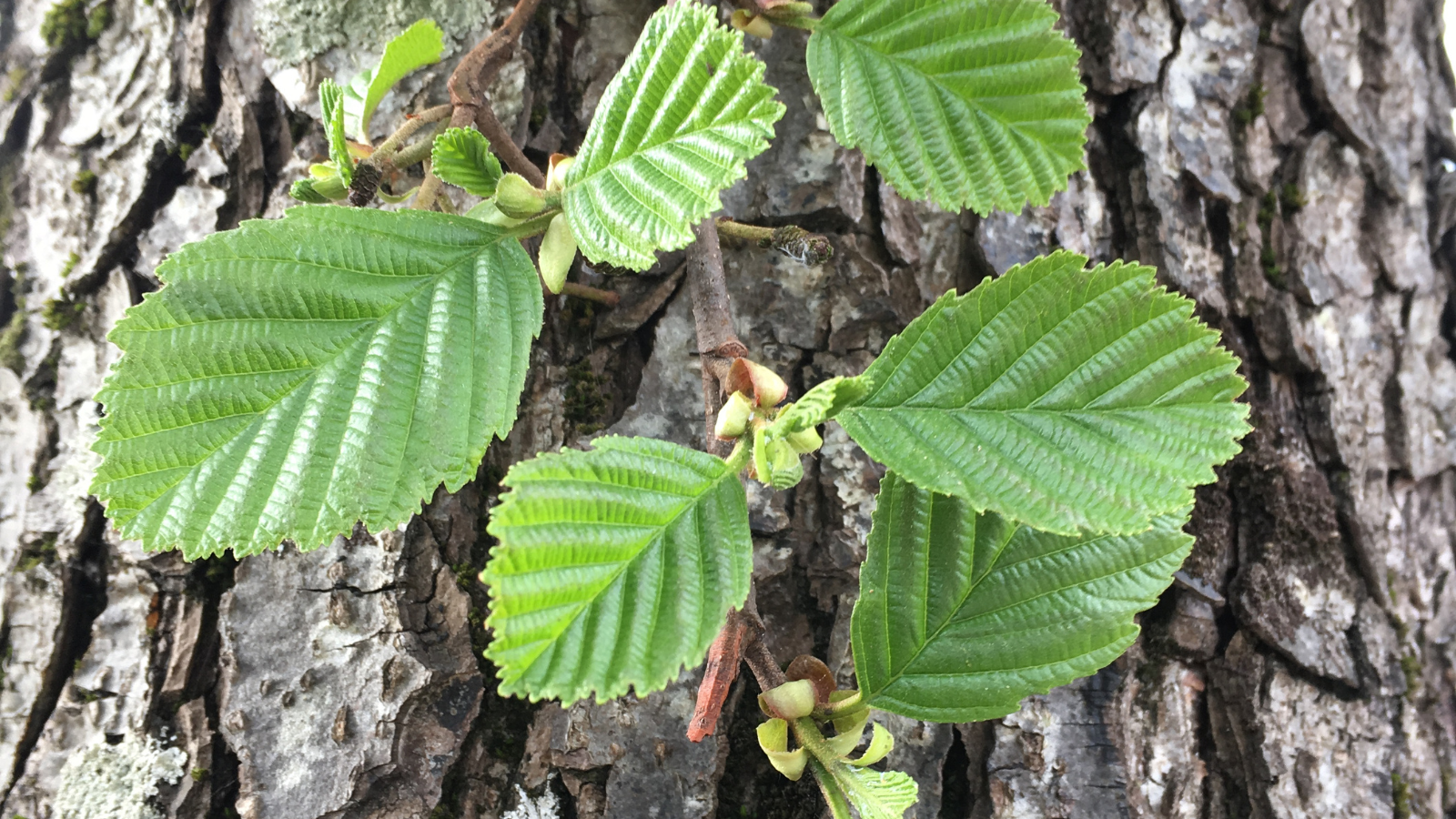
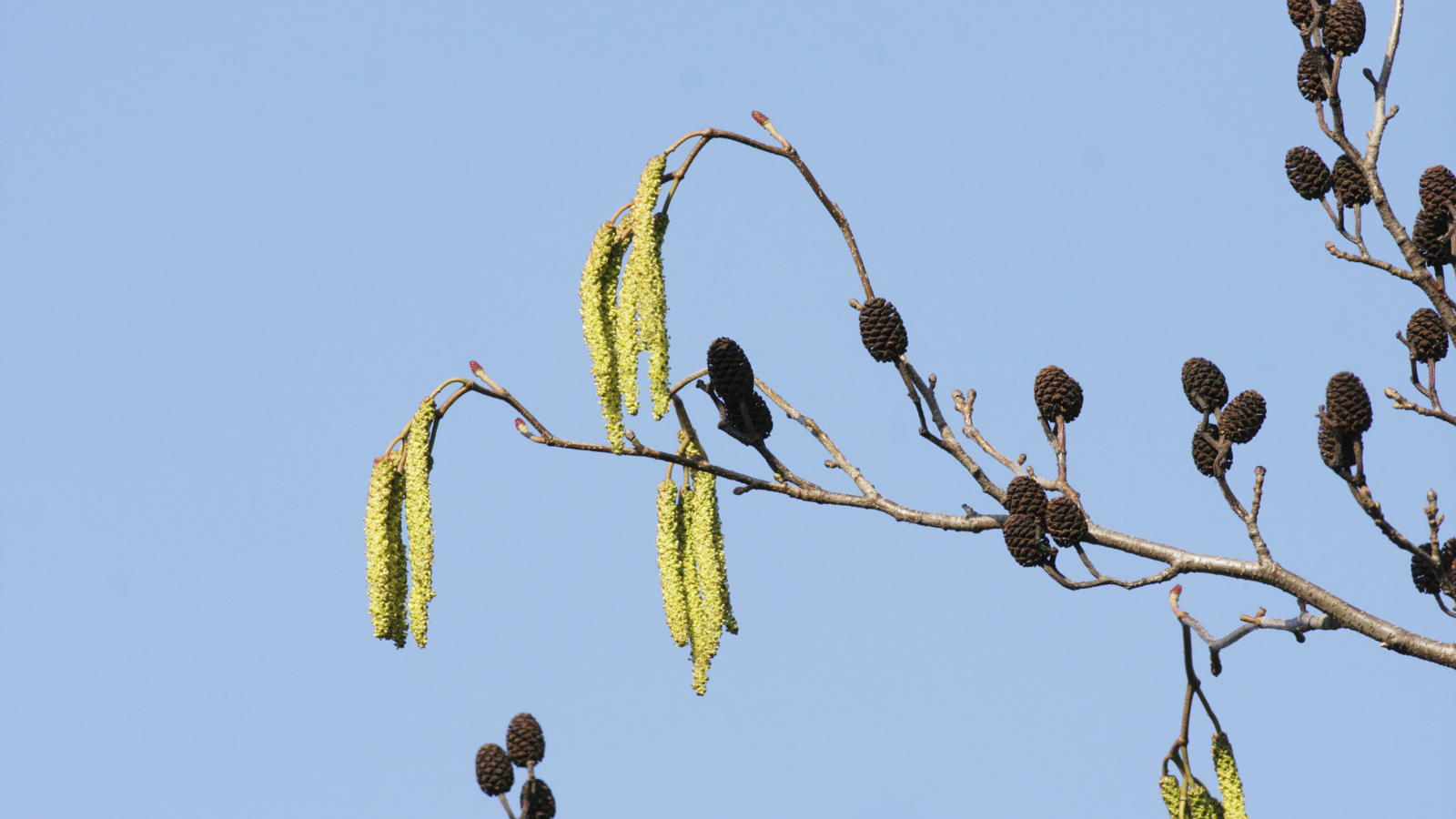
Common Alder Flowers ID: In springtime, the common alder unveils its delightful flowers in the form of dangling catkins. These catkins are reddish-purple in colour and appear before the leaves emerge, adding a charming touch to the landscape.
Common Alder Fruit ID: As the year progresses, the common alder bears small, cone-like fruits called strobiles. These strobiles are dark brown and contain numerous tiny seeds that play a vital role in the tree's reproduction and dispersal. They float, so allow the tree to populate similar favourable habitats along watercourses.
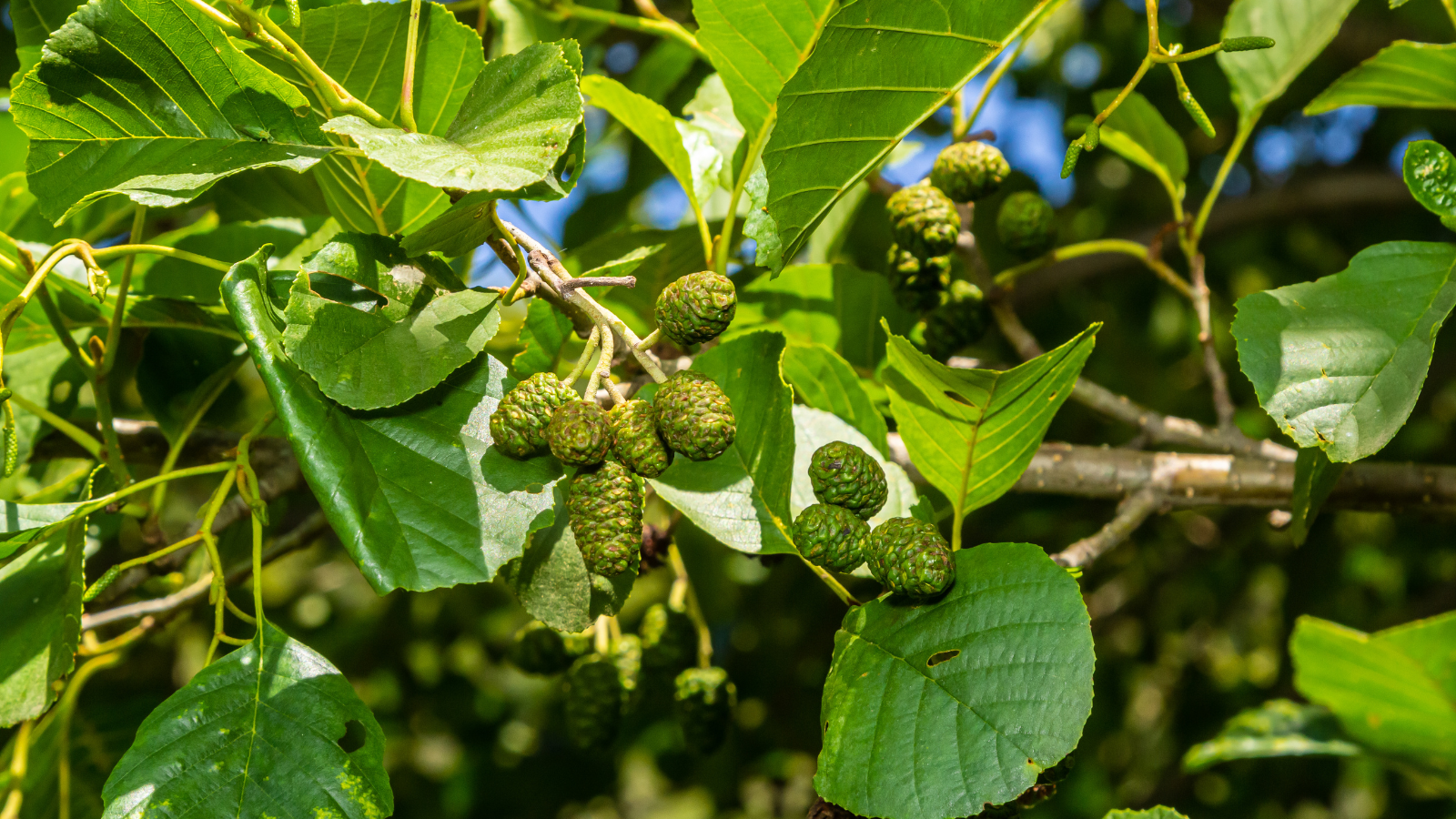
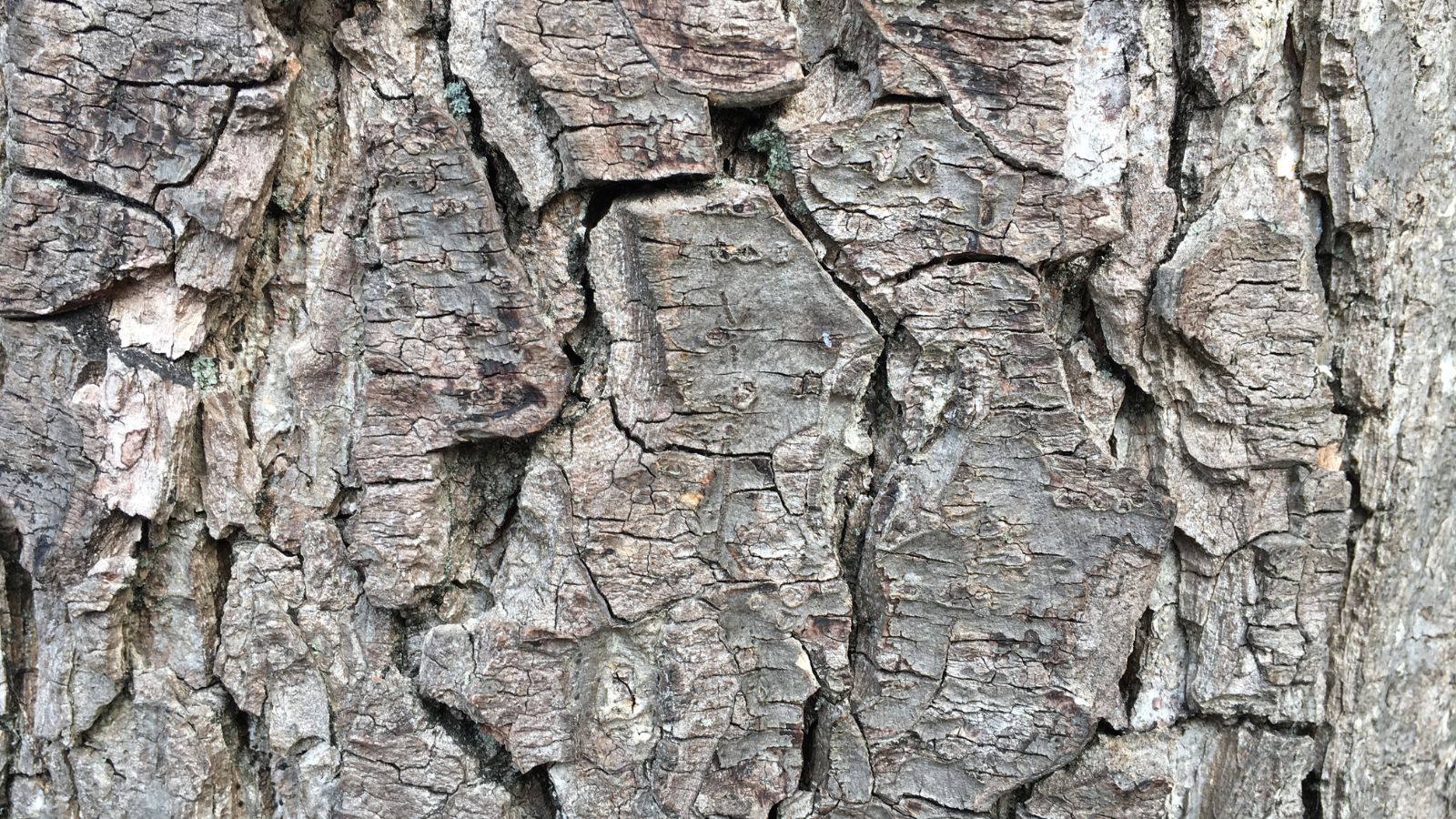
Common Alder Bark ID: The bark of the common alder is smooth and grey when young, gradually developing shallow fissures and becoming rougher with age. Its textured appearance adds character to this already enchanting tree.
What Native UK Wildlife Does Common Alder Support and How Does It Support Them?
The common alder is a true ecological hero, providing sustenance and support for a wide array of native UK wildlife. Its catkins serve as a valuable early source of pollen and nectar for bees, especially queen bumblebees emerging from hibernation. In turn, these buzzing pollinators help fertilise the tree's flowers, ensuring successful seed production. The common alder also acts as a nursery for various butterfly species, including the Purple Hairstreak and the Orange-tip, whose caterpillars feed on its leaves. The 7-8 millimetres long dark metallic blue alder leaf beetle (Agelastica alni) feeds on the leaves of alder trees, leaving a lace effect of tiny holes on the leaves of the tree.
Furthermore, the tree's proximity to water makes it an essential habitat for water insects, amphibians and birds, providing shelter, nesting sites and food resources. As if that weren't enough, the common alder forms a symbiotic relationship with nitrogen-fixing bacteria in its roots, enriching the soil with nitrogen and benefiting neighbouring plants. Truly, this remarkable tree is a key player in supporting and preserving the biodiversity of the UK's ecosystems.
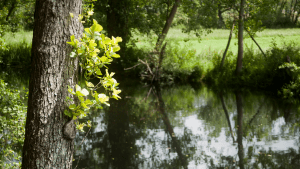
Properties and Uses of Wood/Parts of the Common Alder
The common alder has a rich history of practical uses. Its timber, although relatively soft, is durable and water-resistant, making it highly valued for various outdoor applications. It has been traditionally employed in the construction of water mills, sluice gates and water pipes. The wood's lightness and ease of carving have also made it a preferred material for crafting intricate wooden items, musical instruments and even clogs. In addition, the common alder's ability to thrive in wet environments makes it a valuable asset in flood prevention, as its extensive root systems help stabilise riverbanks and reduce erosion. This versatile tree not only contributes to the beauty of the natural landscape but also offers a multitude of practical benefits.
Start your tree planting journey today. Join I Dig Trees and be a part of something truly special.
Together, we’re taking positive action - planting millions of trees for climate, wildlife and communities.
